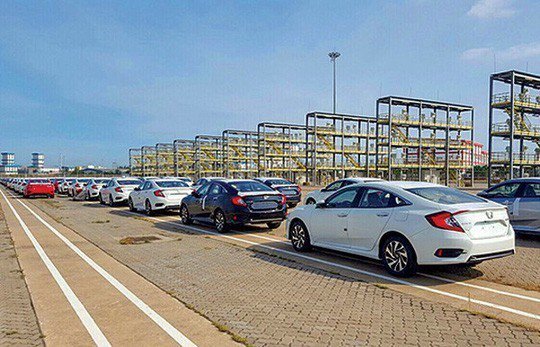Vietnam: Car imports rise again as firms adjust to rules
The General Statistics Office of Vietnam (GSO) estimated that imports of completely built-up cars in April will likely jump in both volume and value compared to the previous month.
Imports have increased again after several months of dropping as the Vietnamese Government issued Decree 116 in October last year, stipulating the conditions for production, assembly, import and business of automobile warranty and maintenance services, which auto importers in Vietnam deem as obstacles, especially regulation required the Vehicle Type Approval (VTA) Certificate to be issued by the exporting country.
The jump in imports indicates that importers have found ways to fully meet the requirements of Decree 116.
Under the ASEAN Free Trade Agreement commitments, the import tax rate of cars from ASEAN countries became zero percent in January this year. Under this policy, at least 40 percent of the parts used in each vehicle must be made in the country of origin.
After the approval by the Vietnam’s Ministry of Transport of the VTA certified by the governments of Thailand and Indonesia, businesses have started importing the first batches of cars with the tax rate of zero percent.
Insiders anticipated that Thai and Indonesian cars would enter the Vietnamese market on a large scale beginning in this April, triggering a surge in imported cars in the coming time.
This month witnessed the import of around 2,000 vehicles of Honda Motors from Thailand after the company stopped car exports to Vietnam for more than a month. Car from other countries such as Indonesia and Malaysia are also expected to soon come to Vietnam.
Global automakers have been predicting that imports from Thailand and Indonesia would flood the Vietnamese market after the tax fell to zero, taking some of the wind out of the sails of domestic manufacturing and assembly, said auto expert Nguyen Minh Dong to Tien Phong (Vanguard) newspaper.
The GSO reported that about 5,000 cars worth US$115 million were imported to Vietnam in March, marking an increase of 25 percent in volume and 8.2 percent in value as compared with February.
The 2017 budget revenue in the northern province of Vinh Phuc, a hub of automobile manufacturing and assembly in Vietnam, fell by VND5 trillion (US$218.8 million), mainly from the auto sector due to the impact of reducing tariffs on ASEAN car imports to zero.
The information was released by Chairman of the provincial People’s Committee Nguyen Van Trì at the conference on 2018 production and economic growth held in Hanoi on March 30.
In 2016, the domestic revenue of Vinh Phuc Province reached VND29.15 trillion, of which about 80 percent was contributed by FDI enterprises. Especially, foreign-invested auto- and motorbike makers such as Toyota Motor Vietnam (TMV), Honda Vietnam and Piaggio Vietnam accounted for 80 percent of the contribution of FDI enterprises.
Policies to develop the domestic automobile industry are necessary to encourage businesses such as TMV to develop manufacturing, said Tri.
In the northern province of Hai Duong where the Ford Vietnam plant is located, the fiscal year 2017 budget report shows that local budget deficits amounted to VND1.57 trillion. FDI enterprises only contributed VND3.57 trillion to provincial revenue, down VND1.43 trillion from the year before. The fall was largely driven by the decision of Ford Vietnam, the key FDI enterprise in the province, to mostly consume imported vehicles instead of manufacturing.
Source: http://www.thejakartapost.com/news/2018/04/02/car-imports-rise-again-as-firms-adjust-to-rules.html


 English
English




